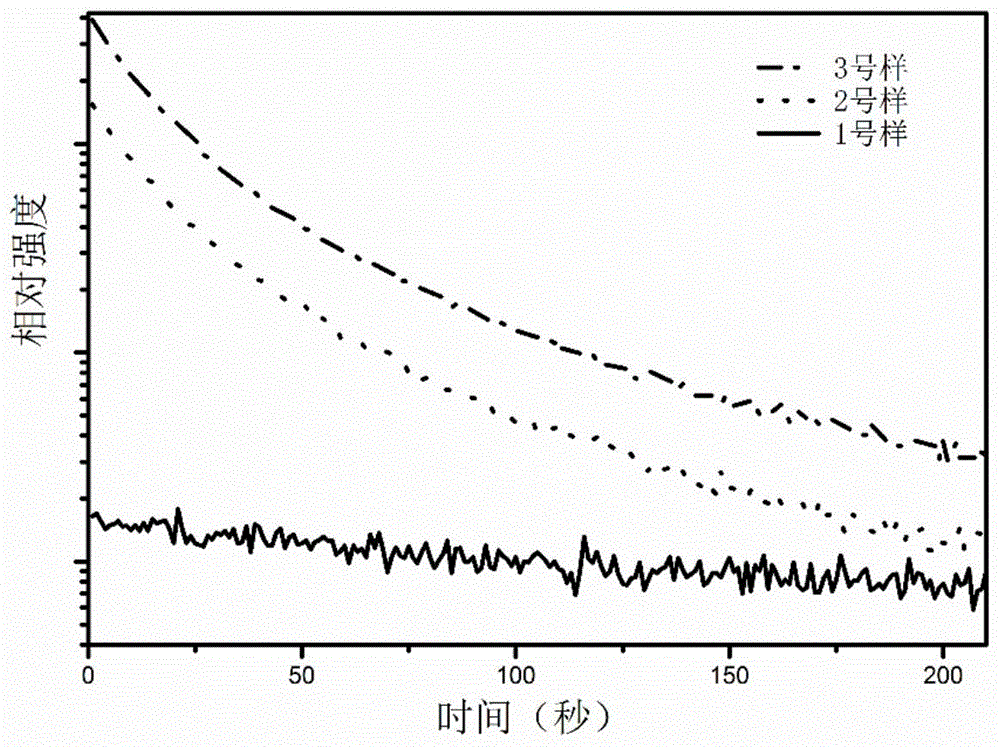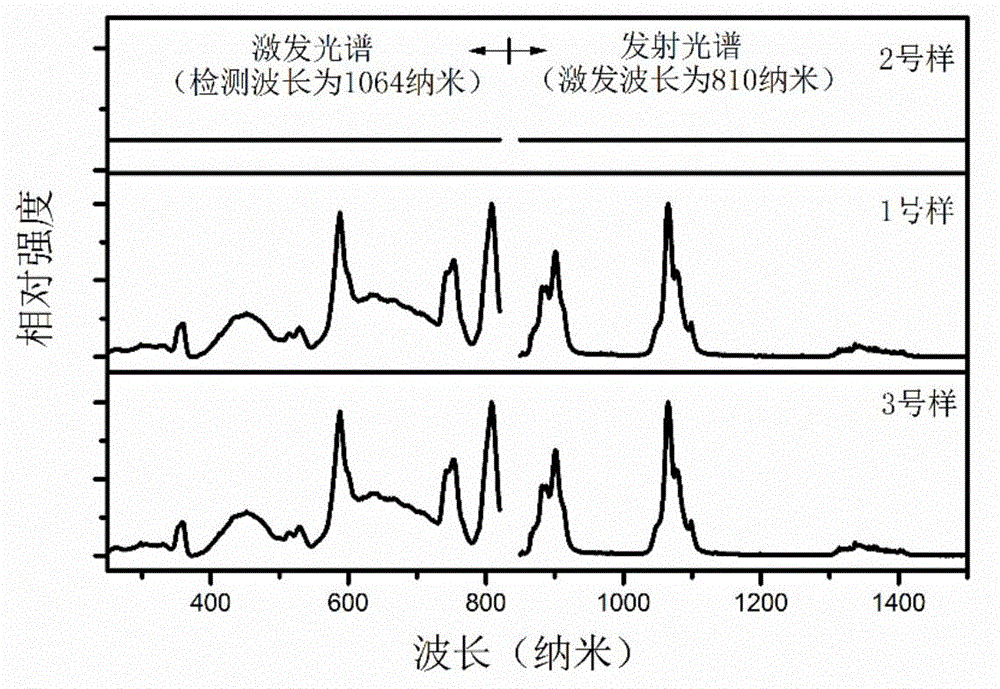Near-infrared long persistence/down-conversion fluorescence bimodal biological imaging material and preparation method thereof
A biological imaging, dual-mode technology, applied in the direction of luminescent materials, chemical instruments and methods, pharmaceutical formulations, etc., can solve the problems of only a few days or a few hours, poor imaging effect, weak luminous intensity of afterglow materials, etc., to achieve good imaging effect Effect
- Summary
- Abstract
- Description
- Claims
- Application Information
AI Technical Summary
Problems solved by technology
Method used
Image
Examples
Embodiment 1
[0033] According to the following composition: matrix La 3 Ga 5 GeO 14 , Cr 3+ The doping amount is 0.5mol% of the matrix, Nd 3+ The doping amount is 0.5mol% of the matrix. Select compounds containing lanthanum oxide, gallium oxide, germanium oxide, chromium oxide, and neodymium oxide respectively, weigh them according to the stoichiometric ratio, and grind them evenly in a mortar; the uniformly ground raw materials are pre-calcined at 1000°C for 4 hours and then taken out. After grinding again, it was fired at 1350°C for 4h. In order to prove the feasibility of the scheme, we synthesized three comparative samples of different components: (1).La 3 Ga 5 GeO 14 :0.005Nd 3+ (No. 1 sample), (2).La 3 Ga 5 GeO 14 :0.005Cr 3+ (No. 2 sample), (3).La 3 Ga 5 GeO 14 :0.005Cr 3+ ,0.005Nd 3+ (No. 3 sample).
[0034] The long afterglow emission spectrum ( figure 1) and attenuation spectrum ( figure 2 ), proving that Nd 3+ The addition of not only did not weaken the ori...
Embodiment 2
[0036] According to the following composition: Ca 3 Ga 2 Ge 3 o 12 , Cr 3+ The doping amount is 5mol% of the matrix, Nd 3+ The doping amount is 10mol% of the matrix, and the compounds containing calcium carbonate, gallium nitrate, germanium oxide, chromium fluoride, and neodymium fluoride are respectively selected, weighed according to the stoichiometric ratio, and fully ground in a mortar; The final raw material was calcined at 1000°C for 6 hours, then taken out, ground again, and fired at 1550°C for 2 hours. After testing the afterglow spectrum, the emission peak is located at 700nm ( Figure 5 ), the excitation wavelength of the fluorescence spectrum is 808nm, and the emission wavelength is 1064nm ( Image 6 ).
Embodiment 3
[0038] According to the following composition: Zn 3 Ga 2 Ge 2 o 10 , Cr 3+ The doping amount is 0.1mol%, Nd 3+ The doping amount is 0.1mol%. Select the compounds containing zinc oxide, gallium fluoride, germanium oxide, chromium carbonate, and neodymium oxide respectively, weigh them according to the stoichiometric ratio, and grind them thoroughly in a mortar; the uniformly ground raw materials are pre-fired at 600°C for 2 hours and then taken out , After grinding again, it was fired at 1250°C for 6h. After testing the afterglow spectrum, the emission peak is located at 702nm ( Figure 7 ), the excitation wavelength of the fluorescence spectrum is 810nm, and the emission wavelength is 1065nm ( Figure 8 ).
PUM
 Login to View More
Login to View More Abstract
Description
Claims
Application Information
 Login to View More
Login to View More - R&D
- Intellectual Property
- Life Sciences
- Materials
- Tech Scout
- Unparalleled Data Quality
- Higher Quality Content
- 60% Fewer Hallucinations
Browse by: Latest US Patents, China's latest patents, Technical Efficacy Thesaurus, Application Domain, Technology Topic, Popular Technical Reports.
© 2025 PatSnap. All rights reserved.Legal|Privacy policy|Modern Slavery Act Transparency Statement|Sitemap|About US| Contact US: help@patsnap.com



